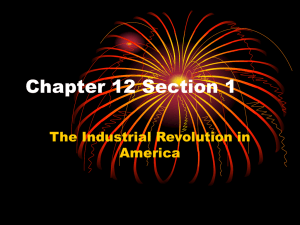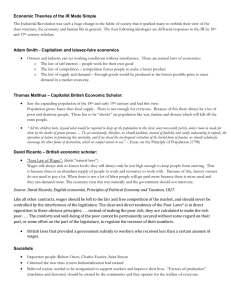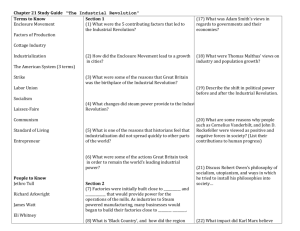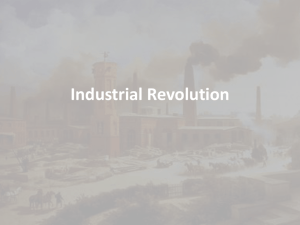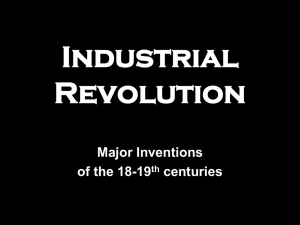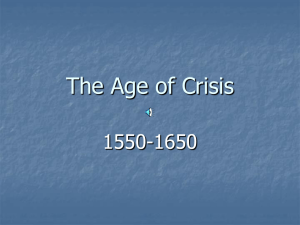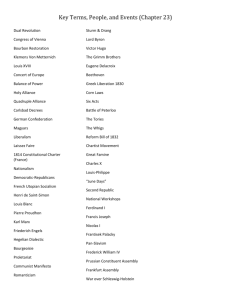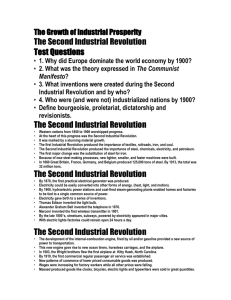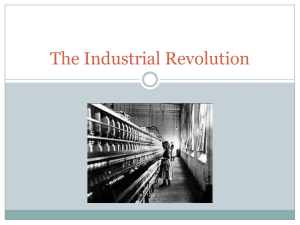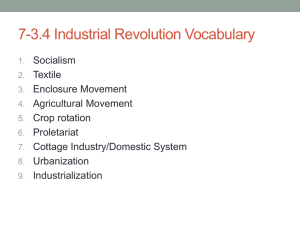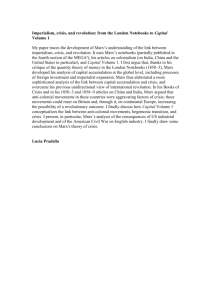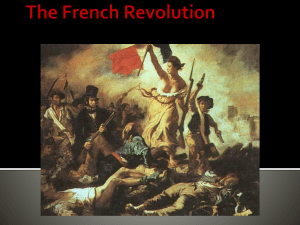The Industrial Revolution - Teacher Kirk
advertisement
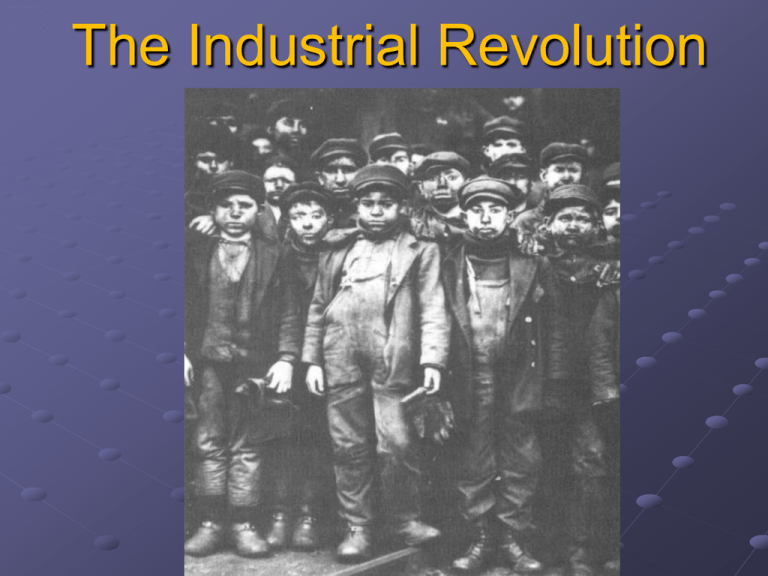
The Industrial Revolution Activity: A Conceptual Map/Mind Map Show a chronological representation of the developments of the industrial revolution dominated by drawings, using words only when necessary. Use symbols like these when appropriate: (You may use any sign or symbol that makes sense to you, but try to make it understandable to others! Economic Influences Mercantilism Dominated Western European economic policy from the 16th to late-18th centuries.[Growing a country's wealth primarily through the accumulation of valuable metals. (gold, silver) This theory promoted exportation and discouraged importation. It is often described as "protectionism." Adam Smith Called the father of modern economics. The publication of his book, The Wealth of Nations in 1776 had a profound impact on the end of the mercantilist era and the later adoption of freemarket policy. Smith promoted a balance of trade, which means an equal level of importation and exportation. Technology before and during the Industrial Revolution Water Mills Heargrave’s “Spinning Jenny” and Whitney’s “Cotton Gin.” Cartwright’s Power Loom Origin: Begins in England 1. England had water power and coal to fuel the new machines 2. Had iron ore to construct buildings, machines, etc 3. Availability of rivers for inland transportation and harbors from which ship could sail 4. England had all the FACTORS OF PRODUCTION-land, labor, capital; all needed for industrial growth Causes of the Industrial Revolution The growth of the textile industry created a huge surge in commerce. Competition among textile mills stimulated the development of superior sources of energy. The steam engine was one of these new energy sources. Improvements in transportation technology A. The steam engine was used on ships, in factories and on trains among other places. It multiplied the efficiency of production greatly. B. Increases in production created a need for raw materials. This stimulated the mining industry and trade in general. Mexico was a primary source for silver. “Newcomen Engine” Consequences: Investment Stimulates Growth Owners had enough money to: A. Buy more raw material B. Invest in machinery C. Promote inventions D. Pay salaries Consequences/Changes in ways of life Urbanizationgrowth of cities London becomes Europe’s largest city with over 1 million people by 1800 Living Conditions there were no sanitary or building safety codes cities lacked adequate housing, education, and police protection whole families often Consequences/Changes in ways of life (cont.) Working Conditions Average worker spent 14 hours, 6 days/week at work Factories were dark and dirty There was no health or unemployment insurance Injuries were common Consequences (cont.) Class Tensions A new Middle Class developed comprised of skilled workers, business people, and professionals Upper class of landowners looked down on those who worked for a living Poor workers saw little improvement in their standard of living They were often replaced by machines so many lost jobs Consequences (cont.) The Surge of Socialism This was an ideology that has its roots in the philosophy and thought of the first half of the 19th century. Its ideals included eliminating private property (the base of capitalism) and pointing out social injustices suffered by workers who were oppressed by owners. By the second half of the 19th century the ideas of Karl Marx and Frederick Engels over the structure of society, class struggle and the oppressed worker had fomented criticism against these injustices. Karl Marx and Frederick Engels


